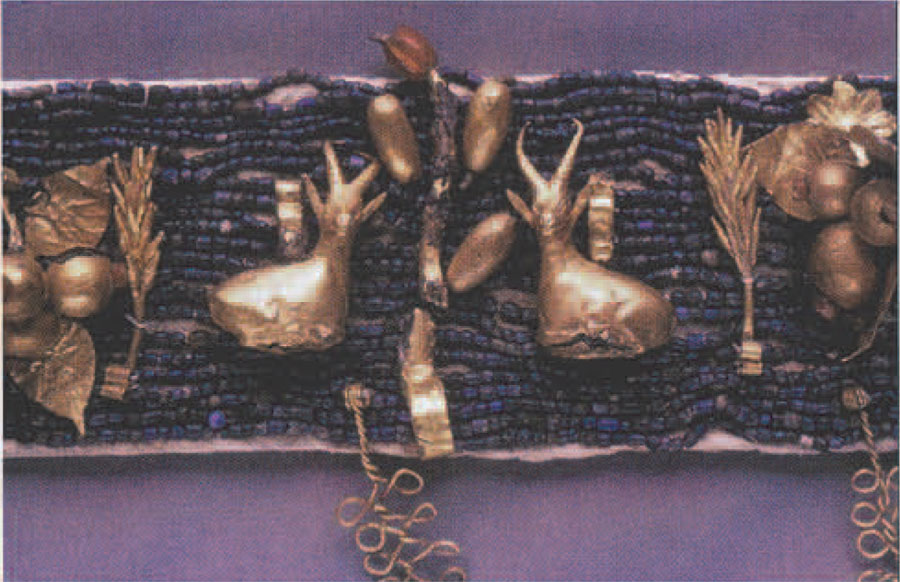
The Royal Cemetery at Ur, a late 3rd millennium BC site in Iraq (Mesopotamia), was excavated by Sir Leonard Woolley in the 1920s in a joint expedition of the University of Pennsylvania Museum and the British Museum. Among the Museum’s share of objects from the excavations was an assortment of small ornaments of gold, silver, carnelian, lapis lazuli, and bitumen (a tar-like substance). These were found together with numerous tiny lapis beads near the skeleton of a woman, Puabi, who was clearly a person of great importance. Woolley assembled these items into a single object that he called Puabi’s “diadem” (Fig. I).
The ornaments are a mixture of abstract, animal, and plant forms. As a paleoethnobotanist, I was most interested in the plant forms. Several resemble stalks of grain, but with a difference: they have little projections all around a central stem, whereas wheat and barley ears have grains on either side of the stalk. A second type looks like a small fruiting bush. But what could they be? When one of the curators of the currently traveling exhibit, “Treasures from the Royal Tombs of Ur,” asked me about them, I took one last look before the diadem went off display.
What I had never noticed, and what proved to be the key to their identification, was that the “grain” and “bush” had been mounted upside down for years. Double loops at one end show that these items are in fact pendants. Oriented correctly, the “grain” and “bush” could represent, respectively, the flowering and fruiting branches of the date palm (Phoenix dacylifera; Figs. 2a, b and 3a, b).
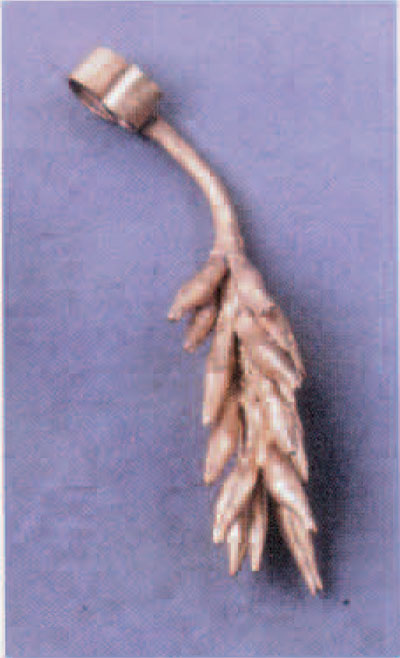
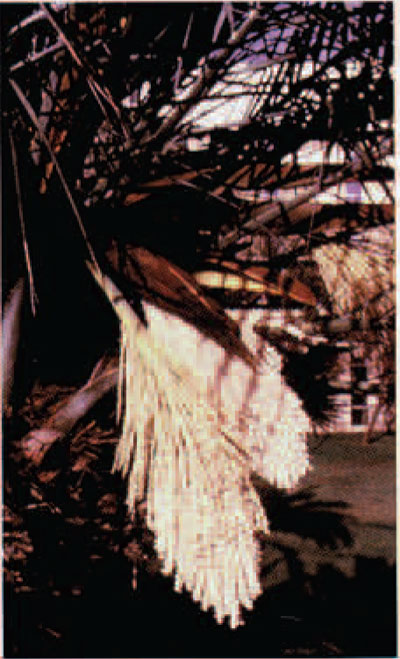
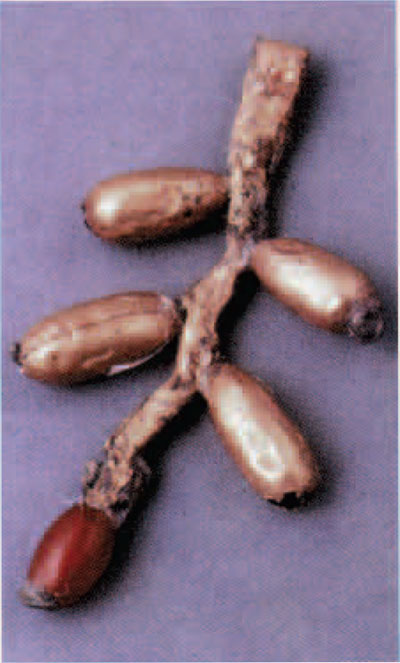
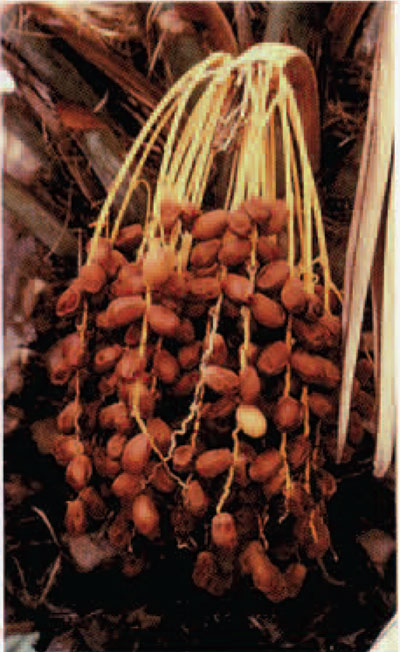
In ancient Mesopotamia, the date palm played an important role in the economy, and its physiology made it at least as important symbolically. Date pits have been found in the Royal Cemetery itself, and plant remains from other Mesopotamian sites include date pits, as well as wood of the palm (see Ellison et al. 1978). Many texts from this and later periods concern date orchards and related matters; there is even a word, defined in the Pennsylvania Sumerian Dictionary, that refers to an item of jewelry in the form of the flowering branch of the date palm.
Male and female flowers of the date palm grow on different trees. In nature, about half the trees are male and half are female (D. Zohary, pers. corn.). In a cultivated date grove, however, the female fruiting trees are pollinated by hand from just a few male trees. It is just a short conceptual step to human sexuality and fertility. Inanna, the Mesopotamian goddess Deanna, known for her part in the “sacred marriage” ritual, considered herself “the one who makes the dates be full of abundance in their panicles [flower clusters]” (Sjoberg 1988).
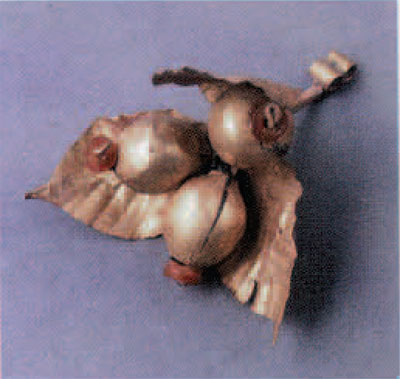
Research for the traveling exhibit led to the deconstruction of Puabi’s diadem; its constituent parts are now thought to be from several different pieces of jewelry (Zettler and Horne 1998). We do not know how the various animals, plants. and abstract forms were originally strung together, nor what the role of the lapis beads was. One as yet unidentified trefoil form—three leaves and three fruit—may be associated with the date branch representations (Fig. 4). The delicate double stringing loop of the male matches that of one type of trefoil fruiting pendant; the slightly coarser loop of the female matches that of the other. The “male” and “female” date pendants were probably strung separately, maybe each with practically an advertisement for the good life in the afterlife.
Naomi F. Miller
Research Specialist in Archaeobotany
Museum Applied Science Center for Archaeology
